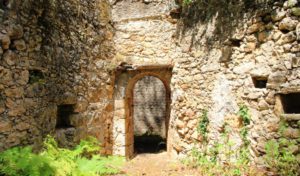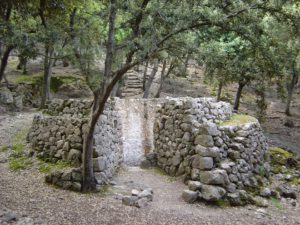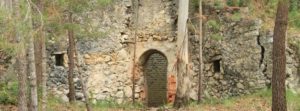Lime Kiln
Currently, and after the geographic and archaeological survey carried out in 2018, there are 2 large centers: Olhos de Água/Ratoinha with 12 lime kilns, spread over an area of approximately 3 hectares, and the nucleus of Brejoeira, with 19 kilns dispersed in an area approximately 4 hectares. The two cores are about 500 meters apart.
Regarding the history of the kilns in Pataias, we find the first reference to kilns in a mortgage deed from 1729, which indicates a vineyard in Pataias, above the lime kiln. Due to the lack of information, it will only be at the end of the 19th century that we find any documentation. Through the contributions paid to the Civil Government, it can be seen that in 1881 there were 15 lime industrialists in Pataias. Certainly, the inauguration of the Oeste railway line in 1888 was an important milestone for the development of the lime industry in Pataias.
The year 1909 is marked by the arrival in Pataias of Manuel Serrano de Figueiredo, who builds two ovens next to the railway line in Pataias. In November of the same year, a contract was signed with the Real Companhia de Caminhos de Ferro for the construction of a railway branch, parallel to the train line, to export lime. Unlike the other industrialists, who built their kilns next to the quarries, located 1 km north of the railway line, Manuel built a decauville line that connected his kilns to the quarry. These facts prove that Manuel Serrano was an unprecedented industrial visionary and the most important industrialist in the parish at the beginning of the 20th century, bringing Pataias lime to the whole country. Already after his death, in 1918, his brothers would inherit the firm. From 1932, after the death of one of the brothers, it would be Luís Serrano de Figueiredo who took over the direction of the business. The Era of Serranos would end in 1945 with the sale of all land to CIBRA, which had been founded the year before.
The lime industry in Pataias reached its peak in the 60’s, accounting for around 30 kilns in operation, some reaching 17 batches per year. In 1981, there were only 9 active lime kilns. The last kiln closed in 1995.
We can’t just talk about kilns, but an industrial complex that also included the shed, the warehouses and even small annexes that served as storage. The kiln was the center of manufacturing activity and the most important building. Identical to a well, it was built in tijolo burro (the oldest in stone and clay), with a landfill around it and a portal in the front. The landfill had a dual purpose: to withstand the pressure exerted by the stone in the early hours and to allow access to the top of the kiln where the stone was unloaded, when the stone was already in its final stage.




